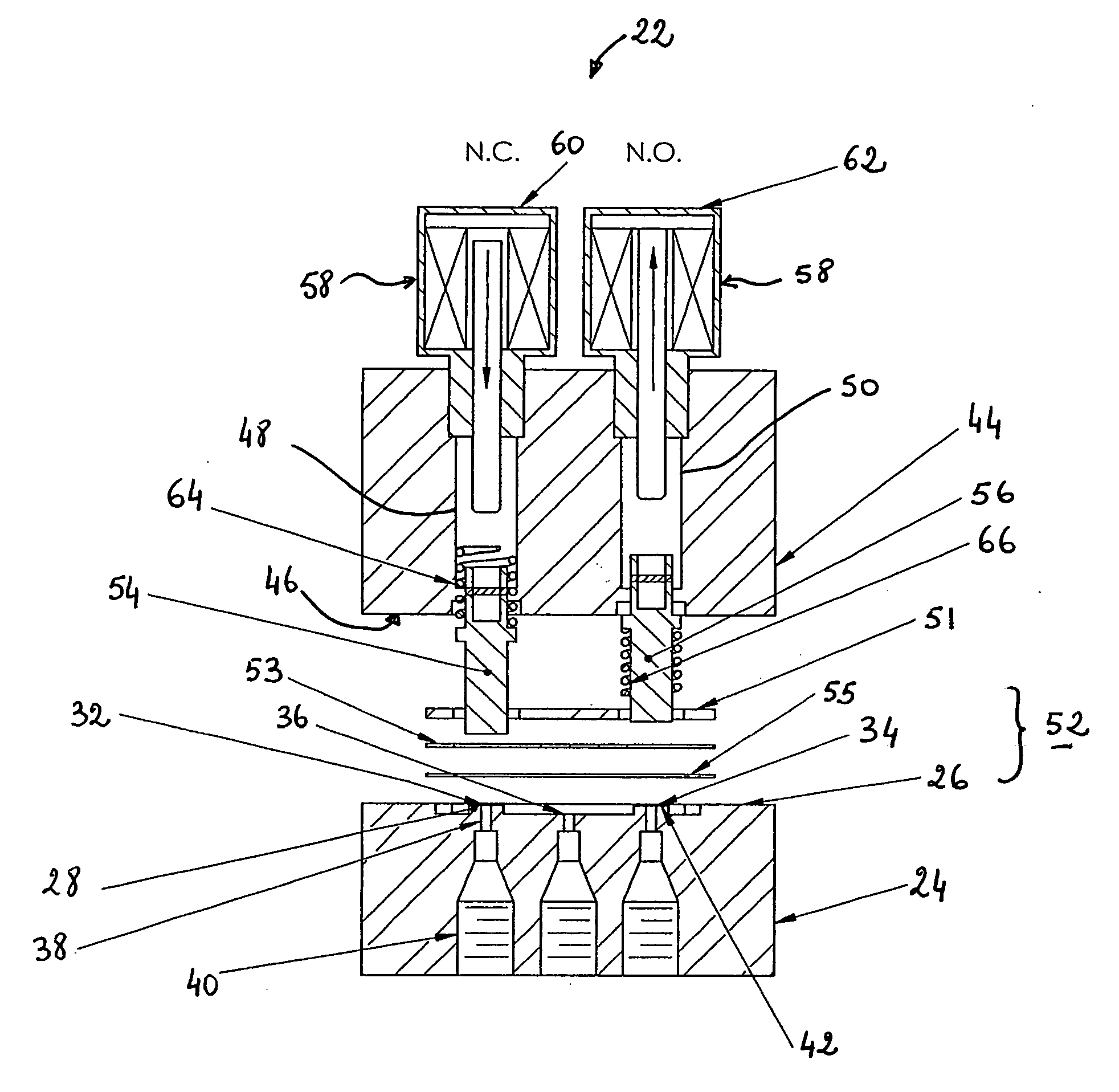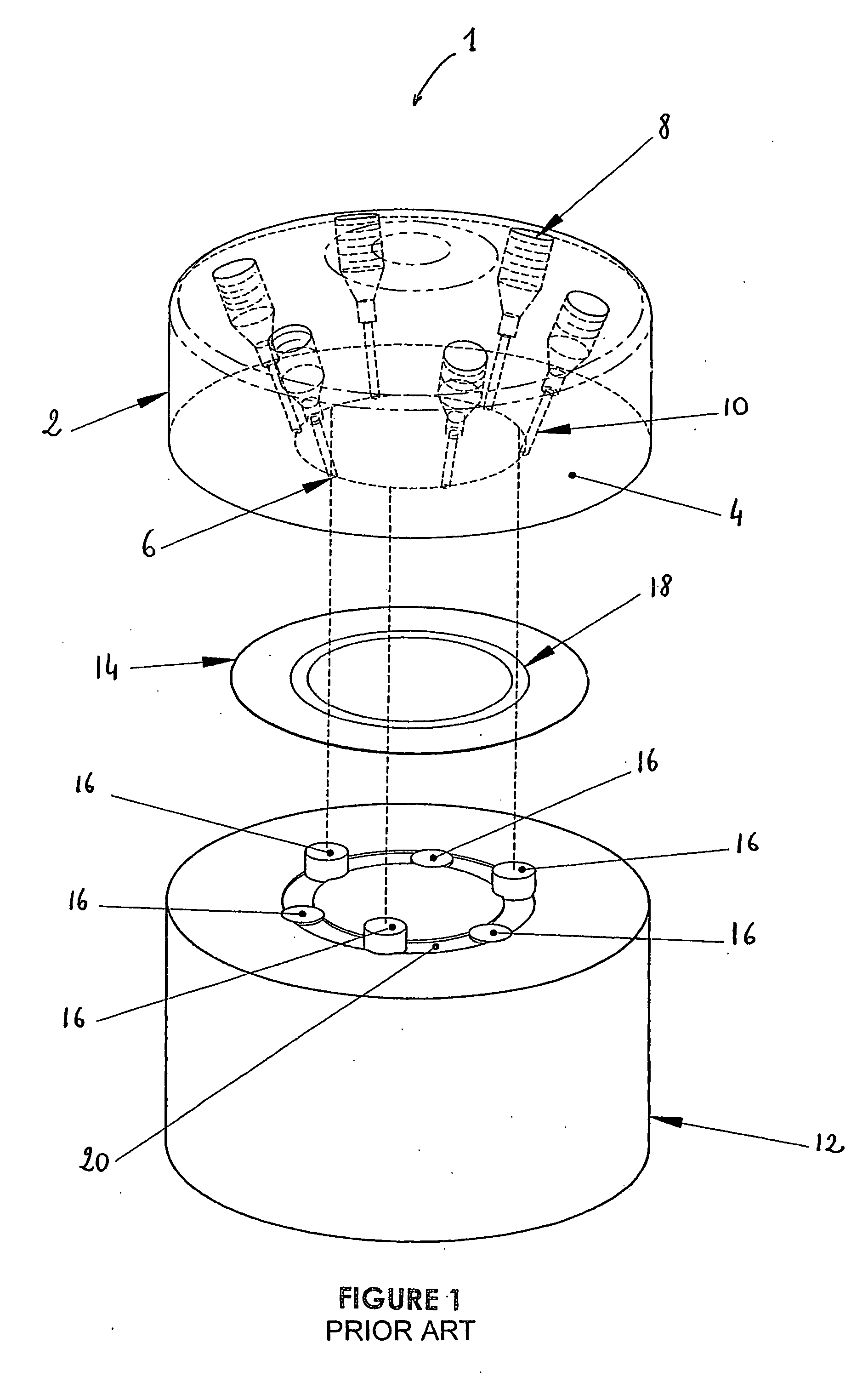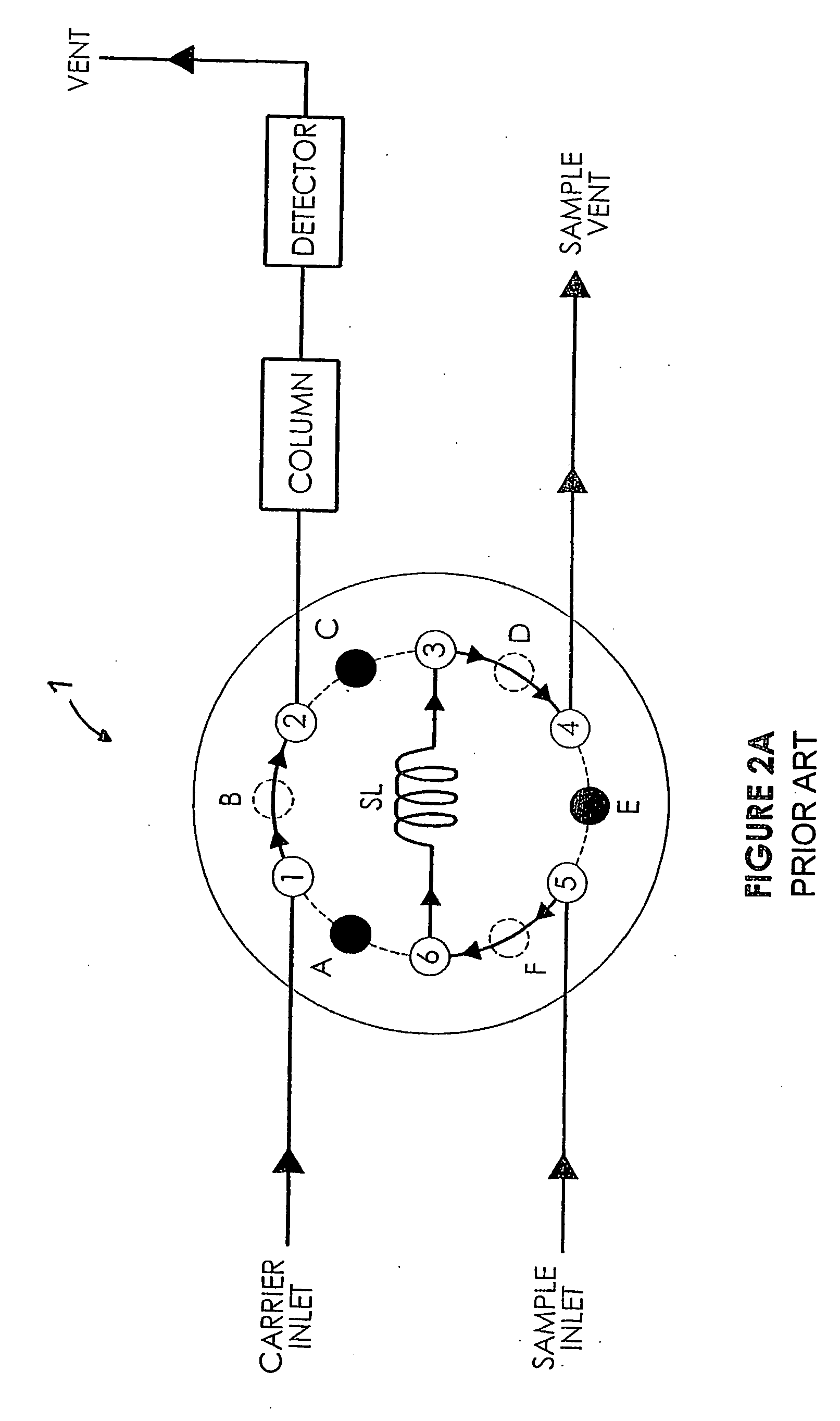Diaphragm-sealed valve, analytical chromatographic system and method using the same
a technology of diaphragm and chromatographic system, which is applied in the direction of slide valve, component separation, instruments, etc., can solve the problems of limiting system performance, requiring a relatively large amount of room in the system, and requiring assembly, i.e. actuating means and valves, and achieving the effect of preventing fluid communication
- Summary
- Abstract
- Description
- Claims
- Application Information
AI Technical Summary
Benefits of technology
Problems solved by technology
Method used
Image
Examples
Embodiment Construction
[0089] In the following description, similar features in the drawings have been given similar reference numerals and, in order to weight down the figures, some elements are not referred to in some figures if they were already identified in a precedent figure.
[0090] The present invention concerns a diaphragm-sealed valve, also referred to as a diaphragm based tight shut off valve, mostly dedicated for analytical equipments, and more particularly chromatographic equipments or on line analyzers. The present invention also concerns chromatographic systems and chromatographic methods based on the use of at least one diaphragm-sealed valve. As will be greater detailed herein below, these systems and methods are based on the use of at least one diaphragm-sealed valve, which, in a first preferred embodiment can be referred to as a three way switching cell. This switching cell has one common port and two actuated ports, these actuated ports being advantageously independently actuated. Thus,...
PUM
| Property | Measurement | Unit |
|---|---|---|
| shape | aaaaa | aaaaa |
| length | aaaaa | aaaaa |
| pressure | aaaaa | aaaaa |
Abstract
Description
Claims
Application Information
 Login to View More
Login to View More - R&D
- Intellectual Property
- Life Sciences
- Materials
- Tech Scout
- Unparalleled Data Quality
- Higher Quality Content
- 60% Fewer Hallucinations
Browse by: Latest US Patents, China's latest patents, Technical Efficacy Thesaurus, Application Domain, Technology Topic, Popular Technical Reports.
© 2025 PatSnap. All rights reserved.Legal|Privacy policy|Modern Slavery Act Transparency Statement|Sitemap|About US| Contact US: help@patsnap.com



